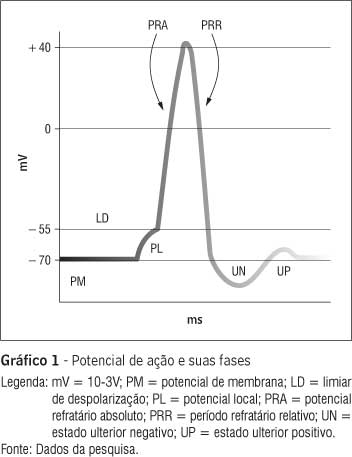INTRODUCTION: The action potential (AP) arises due to a disturbance of the resting state of the cell membrane with consequent flow of ions across the membrane and ion concentration changes in intra and extra cellular space. OBJECTIVES: This article aims to summarize the scientific knowledge accumulated to date on the action potential and neural adaptation in the process of applying a constant stimulus. MATERIALS AND METHODS: This is a literature review on the bases Springer, ScienceDirect, PubMed, IEEE Xplore, Google Scholar, Capes Periodicals Portal as well as books on the topic. The selected preferred language was English with the keywords: action potential; adaptation, accommodation; rheobase; chronaxy; nerve impulse. We conducted a search of articles with a wide time window from 1931 to 2010 and books from 1791 to 2007. RESULTS: In the selected studies was extracted information about the following topics: action potential and its stages; nerve conduction; rheobase; chronaxie, accommodation, and adaptation. CONCLUSION: A stimulus that creates AP, if applied consistently, can reduce the frequency of depolarization as a function of time and, consequently, to adapt the cell. The time it takes the cell in the absence of stimuli, to recover its original frequency, is defined as a disadaptation.
Action potentials; Physiological adaptation; Chronaxy; Nerve tissue; Ion channels










